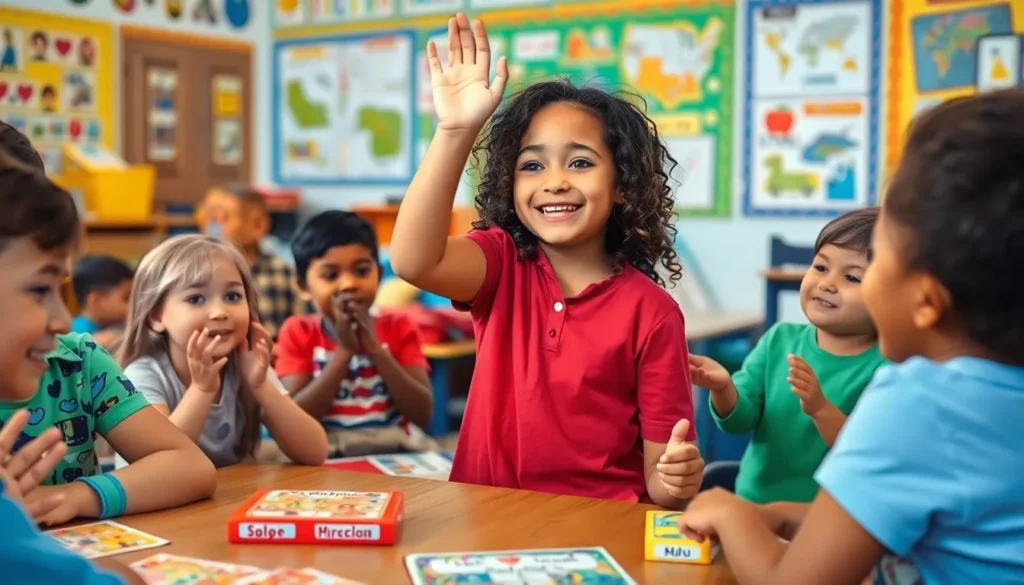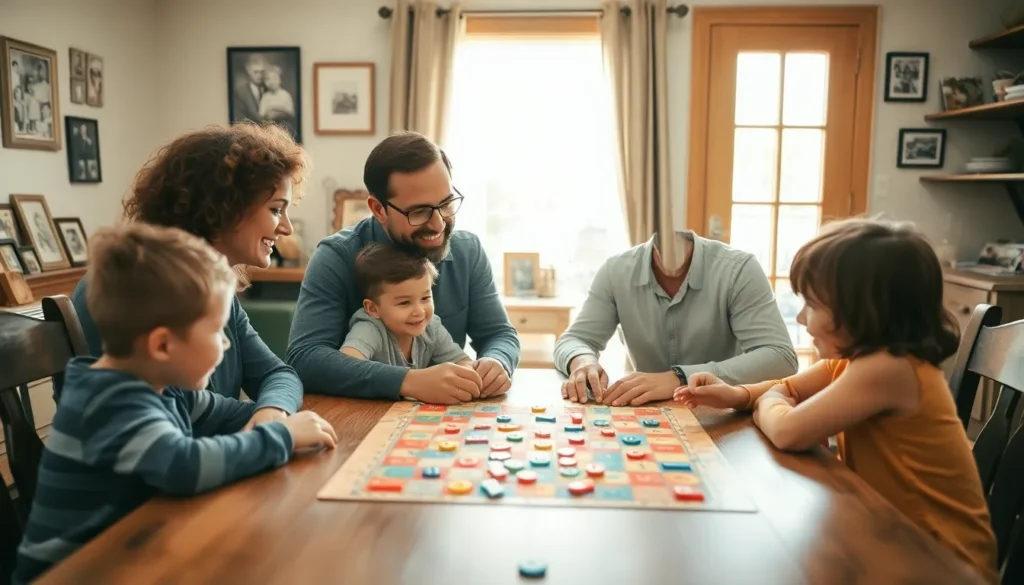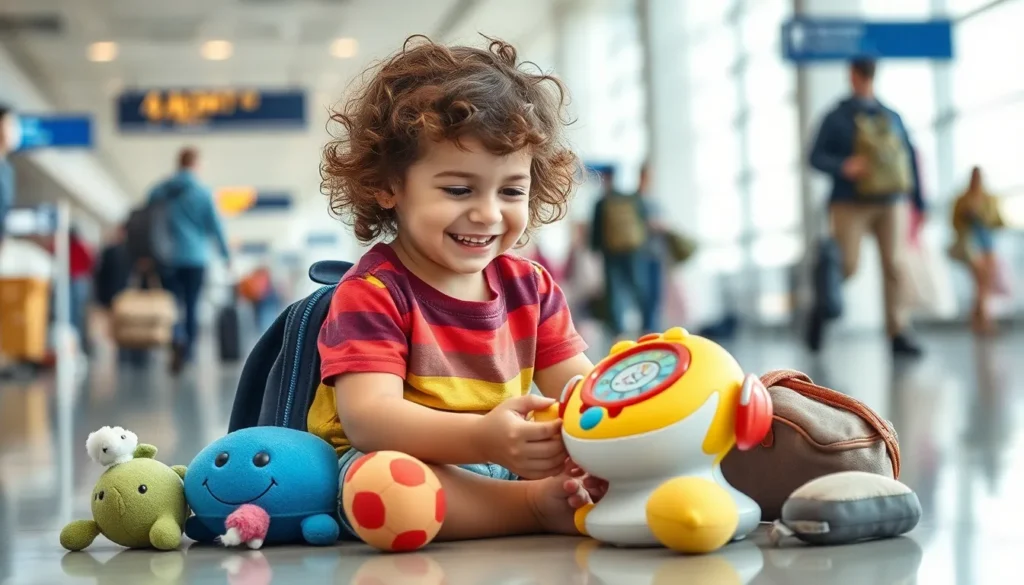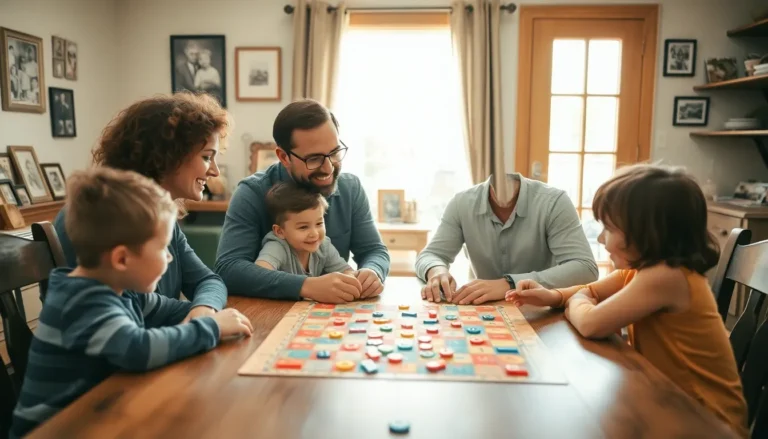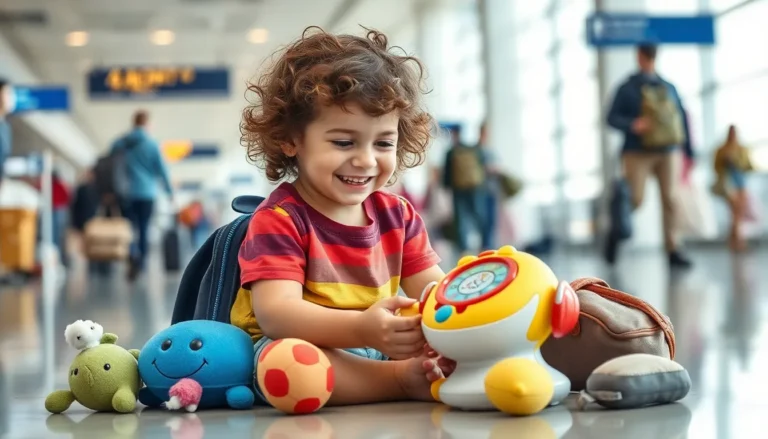Table of Contents
ToggleImagine a world where learning a new language feels less like a chore and more like a thrilling adventure. Language games for kids make that dream a reality, turning vocabulary drills into fun challenges and grammar lessons into hilarious competitions. With every laugh and giggle, children not only boost their language skills but also develop confidence and creativity.
What Are Language Games for Kids?
Language games serve as engaging tools for children to learn and practice new vocabulary and grammar concepts. These interactive activities transform language learning into an enjoyable experience.
Definition and Purpose
Language games are structured activities designed to enhance language skills in children. They focus on vocabulary acquisition, pronunciation, and sentence construction, making learning relevant and stimulating. Aimed at creating a relaxed environment, these games encourage participation and risk-taking, which are vital for language development.
Benefits of Language Games
Language games offer numerous advantages. They promote active learning, helping children retain new words and concepts more effectively. Interaction with peers facilitates social skills and teamwork, creating a dynamic learning atmosphere. Furthermore, these games enhance motivation, keeping children engaged and eager to learn. Cognitive skills also improve through problem-solving challenges presented in the games.
Types of Language Games for Kids
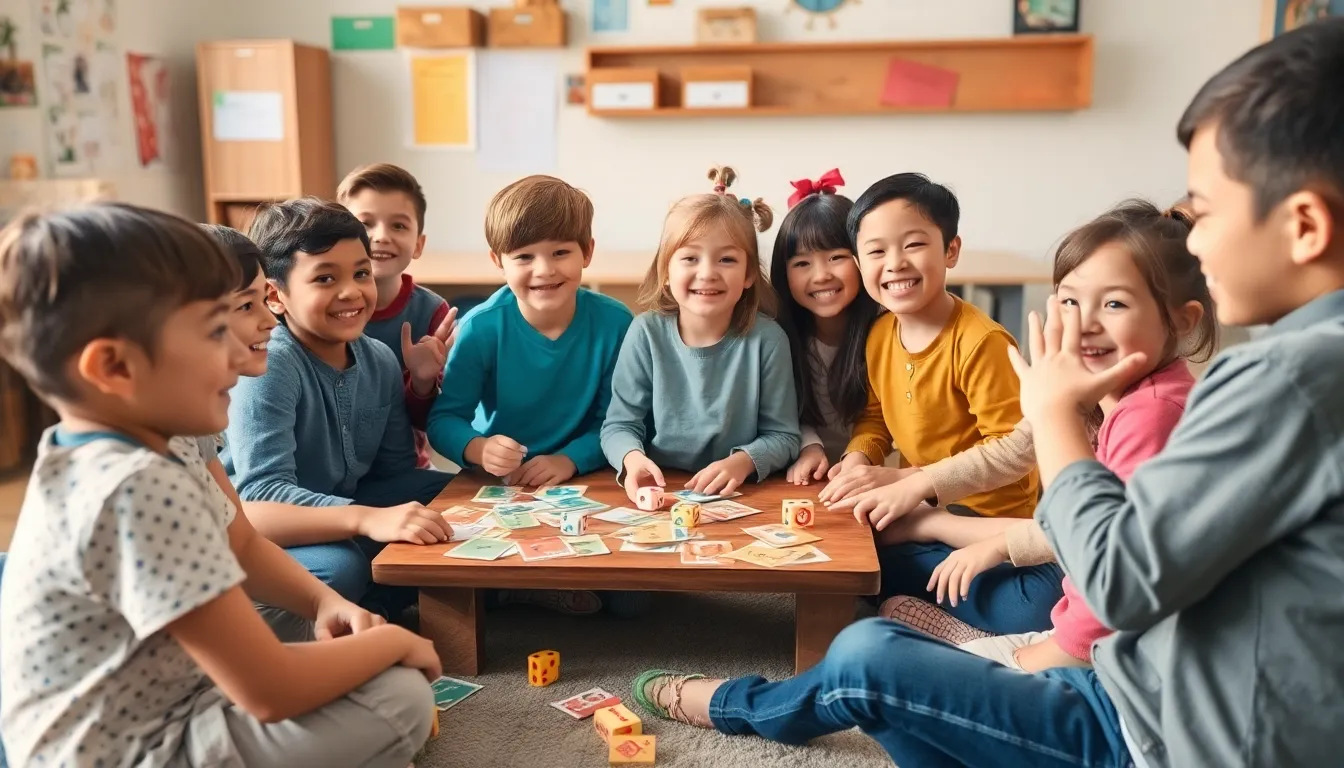
Language games come in various forms, providing distinct methods to develop linguistic skills in children. Two main categories exist: verbal and non-verbal language games.
Verbal Language Games
Verbal language games emphasize spoken language and expression. Activities such as word associations challenge kids to think quickly, enhancing vocabulary and critical thinking. Riddles stimulate creativity while encouraging kids to articulate thoughts clearly. Story-building games foster collaboration, compelling children to contribute their ideas in a narrative format. Additionally, tongue twisters improve pronunciation, helping kids practice specific sounds in a fun manner. These engaging activities not only enrich language skills but also boost confidence in communication.
Non-Verbal Language Games
Non-verbal language games utilize actions and visuals to reinforce language concepts. Games like charades require kids to convey meanings through gestures, enhancing comprehension without spoken words. Picture bingo engages children by linking language with images, which solidifies vocabulary retention. Similarly, story dice create scenarios while prompting imagination and storytelling skills. Flashcards allow visual learners to connect words with representations, accommodating diverse learning styles. These interactive practices foster understanding in a stimulating way, making language learning accessible and enjoyable.
Popular Language Games for Kids
Language games engage children while enhancing their language skills. Two categories encompass the most popular options: classic games and modern games.
Classic Games
Classic games like Scrabble and Bingo provide an interactive way to boost vocabulary. Scrabble enhances spelling and word recognition through letter placement. Bingo can introduce new words, stimulating memory and quick recall. Another favorite is Simon Says, which helps children grasp listening skills and following directions. Charades encourages creativity and expression as children act out words or phrases. These enduring classics promote language learning in a fun atmosphere, making them ideal choices for educational environments.
Modern Games
Modern games leverage technology to elevate language learning. Digital apps like Duolingo combine gamification with language practice, allowing children to learn at their own pace. Interactive websites incorporate quizzes and challenges that reinforce vocabulary and grammar. Online scavenger hunts motivate children to find items related to specific words or themes. Language puzzles also entice kids while enhancing problem-solving abilities. Virtual reality games immerse players in language-rich environments, fostering natural interactions with the target language. These contemporary approaches ensure that language learning remains engaging and relevant for today’s children.
How to Incorporate Language Games into Learning
Integrating language games into learning environments enhances engagement and skill acquisition. Both parents and educators can create an effective atmosphere for fostering language development.
Tips for Parents
Selecting appropriate language games aligns with children’s ages and interests. Engage kids by introducing games that match their current language level. Encourage regular game play, as consistency reinforces learning and builds vocabulary. Offer guidance during play, allowing children to explore language concepts safely. Celebrate accomplishments to boost confidence and motivation. Incorporating games into daily routines, like during meals or car rides, adds fun and enhances language skills seamlessly.
Classroom Implementation
Establishing language games in the classroom cultivates a dynamic learning experience. Start with group activities to promote collaboration and interaction among students. Vary game types, offering verbal and non-verbal options to cater to diverse learning styles. Incorporate technology through educational apps and interactive websites that provide real-time feedback. Schedule regular game sessions, making them a consistent part of the curriculum. Monitor progress through game outcomes, allowing modification of activities to meet evolving learning needs.
Language games for kids offer an exciting way to enhance language learning while fostering creativity and confidence. By transforming traditional lessons into interactive experiences, these games engage children in meaningful ways. Whether through verbal or non-verbal activities, they cater to various learning styles and keep children motivated.
Incorporating language games into daily routines or classroom settings not only promotes active learning but also enhances social skills and teamwork. As children participate in these fun challenges, they develop essential language skills that will serve them well in the future. Embracing this playful approach to language learning can make a significant difference in a child’s educational journey.

